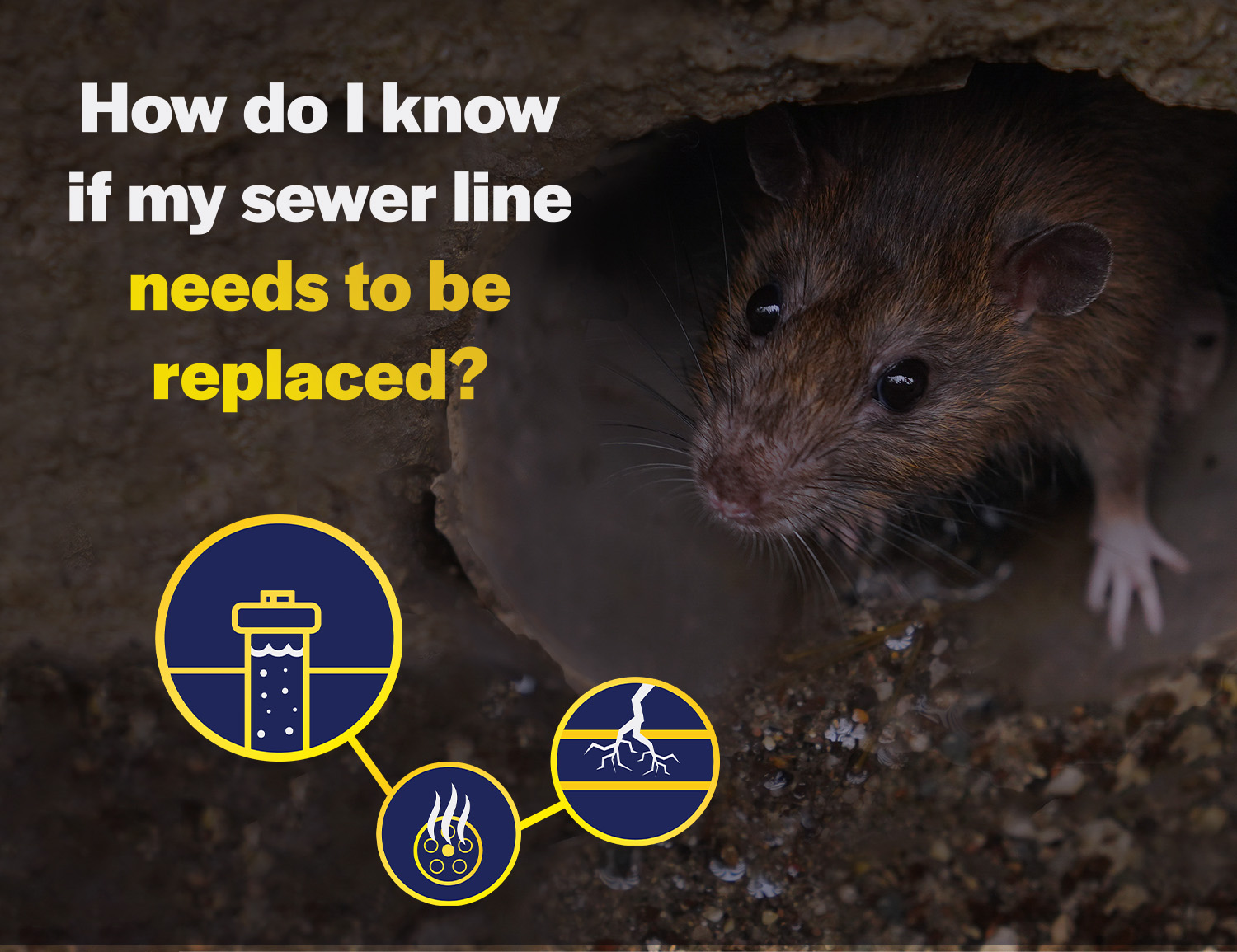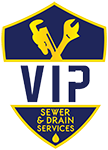
Your home’s sewer line is an integral part of the plumbing system, responsible for carrying wastewater from your property to the municipal sewer system. Like any other component of your home, sewer lines can deteriorate over time, and if left unchecked, can lead to costly and messy issues. But how do you know if your sewer line needs to be replaced? In this guide, we’ll explore the key signs and symptoms that indicate it may be time to consider sewer line replacement.
Indoor signs of sewer line damage
1. Frequent Clogs and Blockages
One of the early signs that your sewer line may be in trouble is the occurrence of frequent clogs and blockages in your drains. While minor clogs are common and can often be resolved with a plunger or a drain snake, recurring blockages in multiple drains throughout your home could be indicative of a more significant issue in your main sewer line. If your drains are constantly backing up, it’s a clear sign that you should have your sewer line inspected.
2. Slow Drains
Slow drains are another common indication of sewer line problems. If you notice that water is draining slowly in multiple sinks, tubs, or toilets, it may be due to a partial obstruction or damage to the sewer line. Slow drains are typically caused by a buildup of debris, tree root intrusion, or pipe degradation, and they should not be ignored.
3. Unpleasant Odors
Unpleasant sewage odors in and around your home are a telltale sign that your sewer line may be compromised. These odors may be most noticeable in the basement or near floor drains, but they can permeate other areas of your home as well. The presence of sewage odors is not only unpleasant but also a potential health hazard. It’s essential to address this issue promptly.
4. Frequent Backups
If your sewer line is deteriorating or clogged, you may experience sewer backups, which can lead to wastewater spilling out of your drains, toilets, or clean-out access points. Sewer backups are not only unsanitary but can cause extensive damage to your property. If you’re encountering frequent backups, it’s time to seek professional help.
5. Gurgling Sounds
Strange gurgling or bubbling noises coming from your drains when you flush the toilet or run water in sinks or bathtubs are signs of air being trapped in your plumbing system. This can occur when your sewer line is obstructed or damaged, preventing proper airflow. Gurgling sounds can be an early warning sign of sewer line problems.
6. Rodent or Insect Infestation
Rats live and thrive in the sewers. They also have an incredible ability to squeeze through very small openings and thin pipes. A rodent infestation may mean that a crack in your sewer line has allowed uninvited guests to enter your property. The same applies to insects such as sewer flies and cockroaches. While pest control will solve this problem temporarily, a more permanent solution is addressing the damaged sewer line.
Outdoor signs of sewer line damage
1. Random, Lush Patches of Grass
Surprisingly, your lawn can also provide clues about the state of your sewer line. If you notice unusually lush and green patches of grass or vegetation in your yard, it could be an indicator of a sewage leak. The leaking sewage acts as a fertilizer, promoting the growth of vegetation in that area. Conversely, dry and dying patches of grass may indicate the opposite – a problem with your sewer line that’s preventing proper drainage.
2. Sinkholes or Depressions
Sinkholes or depressions in your yard or driveway can be alarming signs of a compromised sewer line. These occur when the ground above the sewer line collapses due to erosion caused by leaking sewage. Sinkholes pose a significant safety risk and should be addressed promptly.
3. Cracks in the Foundation
Sewage leaks from a deteriorating sewer line can damage your home’s foundation. If you observe cracks in your basement floor or walls, it may be a sign of the soil shifting due to the presence of water from a damaged sewer line. Foundation issues are costly to repair, so it’s crucial to address the root cause, which may be a deteriorating sewer line.
4. Visible Tree Root Intrusion
Tree roots are a common cause of sewer line damage. If you have large trees on your property and notice tree roots penetrating your sewer line, it’s a clear sign that your sewer line is at risk. Tree roots can exert significant pressure and cause cracks or blockages in the pipe.
Other factors to consider
The age of your sewer line is also a crucial factor to consider. Most sewer lines have a limited lifespan, typically ranging from 50 to 100 years, depending on the material used. If your sewer line is approaching or has exceeded its expected lifespan, it’s wise to proactively consider replacement, even if you haven’t yet experienced any obvious issues.
What to Do If Your Sewer Line Needs Replacement
If you’ve observed one or more of the signs and symptoms mentioned above and suspect that your sewer line may need replacement, here are the steps to take:
Consult a Professional: The first and most crucial step is to contact a licensed and experienced plumber or sewer specialist. We can perform a thorough inspection of your sewer line to diagnose the problem accurately.
Sewer Line Inspection: A camera inspection is a common method used by professionals to assess the condition of your sewer line. It provides a real-time view of the interior of the pipe, helping to pinpoint issues such as cracks, blockages, and root intrusion.
Determine the Extent of Damage: Based on the inspection results, your plumber will assess the extent of the damage to your sewer line and recommend the most appropriate course of action, which may include repair or replacement.
Consider Trenchless Options: Trenchless sewer line replacement methods, such as pipe lining or pipe bursting, are less invasive and can often save you time and money compared to traditional excavation. Discuss these options with your plumber.
Obtain Multiple Quotes: It’s a good practice to get quotes from multiple reputable plumbing contractors before proceeding with any work. This will help you make an informed decision and ensure that you’re getting a fair price.
Schedule the Replacement: Once you’ve selected a contractor and agreed on the scope of work, schedule the sewer line replacement. Keep in mind that this may involve some disruption to your property, so plan accordingly.
Your sewer line is a critical component of your home’s plumbing system, and recognizing the signs of trouble early can save you from expensive repairs and property damage. If you notice any of the warning signs mentioned in this article, don’t hesitate to contact your sewer professionals at VIP Sewer and Drain Services, where we’re ready to assist you with your plumbing emergencies 24/7!


